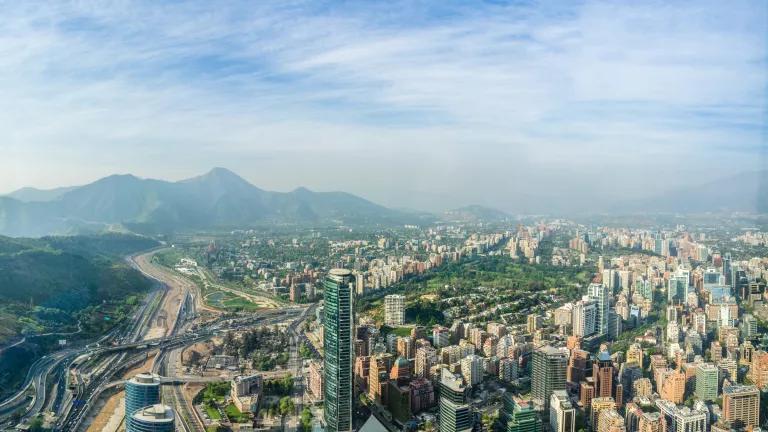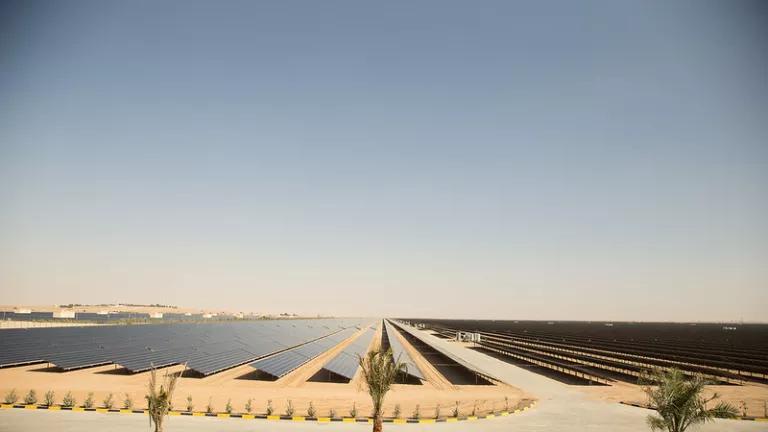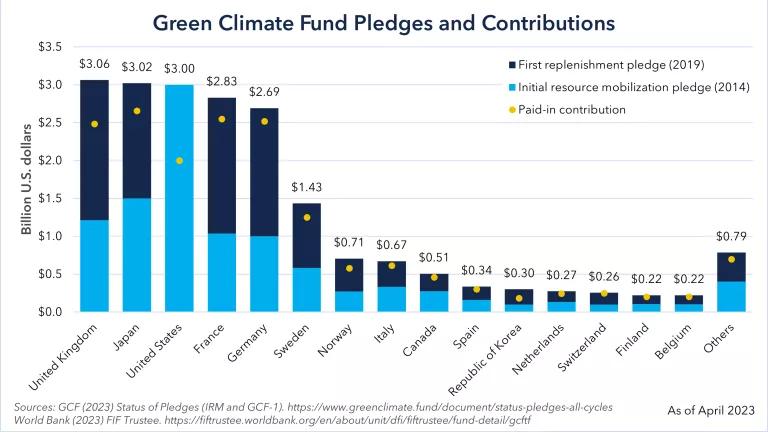What Does Climate Adaptation Look Like in Latin America?
Cuando llegue el próximo gran desastre climático y con el aumento de calentamiento global, ¿qué tan preparados y adaptables podremos estar?

An aerial view of Santiago, Chile.
This post is part of an NRDC series on climate adaptation. You can find the previous post here.
When the next major climate disaster hits and as global warming increases how prepared and adaptable will we be?
This is the primary question that needs to be asked and answered by decision makers and communities in Latin America—and around the world.
One way to respond is through climate adaptation measures. Adaptation means taking steps to live with the effects of climate change. This looks different depending on the community, country, or continent. In some cases, adaptation may mean changing the crops that farmers grow, or developing new irrigation systems. Adaptation ideally allows us to move beyond just surviving the climate crisis to thriving in a fundamentally new world.
As a region, Latin America is highly susceptible to climate change impacts, and extreme climate events are becoming increasingly frequent and severe. The Inter-American Development Bank (IDB) estimates damages in the region from climate impacts including drought, floods, and sea level rise will likely reach $100 billion per year by 2050. Over 50 percent of Latin American populations reside in countries with high or extreme climate vulnerability. With climate impacts being felt across the region, Latin American nations will need to implement a variety of climate adaptation techniques in both rural communities and rapidly expanding cities to address drought, water scarcity, and energy security.
In Chile, NRDC has developed a U.S. – Chilean water webinar exchange that focuses on adaptive water management strategies from experts in both countries. Chile is highly vulnerable to climate change and is already suffering a serious water crisis impacting health, sanitation, food production and energy. The current situation requires urgent solutions to ensure that there is sufficient and safe water for communities and ecosystems. This webinar exchange hopes to highlight initiatives and policy solutions that promote safe water access for people and ecosystems in both hemispheres. In the capital city of Santiago, NRDC has developed a comprehensive water report that focuses on adaptive solutions to address the on-going drought. Some solutions include green infrastructure, increasing efficiency through decreasing per capita consumption, reducing water losses and moving towards an overall more integrated water basin.
As Latin America deals with adaptation not only in the face of climate change, but also COVID-19, NRDC has developed a second webinar series, "Beyond COVID-19: Tackling Water Challenges in Chile & Mexico," focusing on water issues during the pandemic. The effects of climate change pose an added threat to potable water access, limiting scarce resources even further. The urgency to implement solutions that expand access to drinking water and improve the resilience of communities in Latin America has become even clearer in the face of the pandemic. Experts from civil society and the public and private sector discuss these solutions and innovations in the context of Chile and Mexico in a webinar organized by the NRDC Latin America Project, the Resilience Unit of the Santiago Metropolitan Regional Government, and the Office of Urban Resilience (ORU) in Mexico. The online seminar seeks to spotlight the current problems in vulnerable areas with little or no access to safe and affordable drinking water, which have been exacerbated by COVID-19. And ultimately, the goal is to analyze the gaps in water management, discuss lessons learned, and assess solutions and implementation mechanisms to address the water challenges we are already facing under climate change. The webinar is divided into three sections that will take place every two weeks: the first session will focus on the role of the public sector, the second on the responsibility of rural and urban drinking water providers, and finally the third session will address solutions and innovations and their implementation to improve resilience and water supply at the local level.
In Mexico, the Chihuahuan Desert grasslands are facing numerous threats including expanding industrial agriculture, poor water management, unsustainable cattle grazing, invasive species, and extreme weather exacerbated by climate change. Healthy grasslands are an important part of a thriving ecosystem for plants, animals, and people. In the Chihuahuan Desert grasslands, there has also been continued over-exploitation of aquifers as grassland is converted to cropland irrigated with groundwater. We are working to raise awareness of the need to protect this critical ecosystem in order to provide greater resilience to water scarcity.
In terms of energy security, NRDC recently partnered with Resilient Power Puerto Rico to install a solar power grid on the island of Vieques, which was hit especially hard by Hurricane Maria in 2017. An initial installation of solar panels and a battery system in the Fortin Conde de Mirasol, a popular tourist destination, will both reduce electricity costs and maintain at least some electric service when extreme weather strikes.
Many of the same vulnerabilities Latin America has to climate change, including access to clean water, make the region especially vulnerable to COVID-19. Now the emerging COVID-19 hotspot, some the region’s politicians, musicians, artists and influential figures recently signed a declaration in a commitment to sustainable development that focuses on adaptation as they confront the COVID-19 pandemic. The declaration, entitled “Principles for a Sustainable Future for Latin America in Times of Planetary and Pandemic Crises,” was authored by leaders including former president of Chile, Ricardo Lagos, and former president of Mexico, Felipe Calderón, as well as Environmental ministers, researchers, and representatives from both the private sector and civil society. According to Manuel Pulgar Vidal, the former Peruvian Environmental Minister, the novel coronavirus has revealed four key actions countries need to take to create more sustainability throughout Latin America.
- Changing environmental behaviors such as deforestation that lead to this type of pandemic;
- Creating more social services for inclusion, in particular water access and connectivity;
- Creating a guide for adaptive disaster responses;
- Working toward a long-term plan for a de-carbonized economy that takes climate change into consideration.
Pulgar Vidal notes that ongoing pandemic has pushed Latin American leaders to create an ambitious plan that attempts to unify countries with a wide range of social and economic differences. “COVID-19 has shown us that South-South regional solidarity is fundamental towards facing crises and finding adaptive solutions,” he said.
Latin America has already taken important actions on climate adaptation. However, much more is needed and COVID-19 has the potential to hamper back existing efforts. It will be essential for nations across Latin America to work together to boost the region’s capacity to survive and thrive in the face of climate change.



